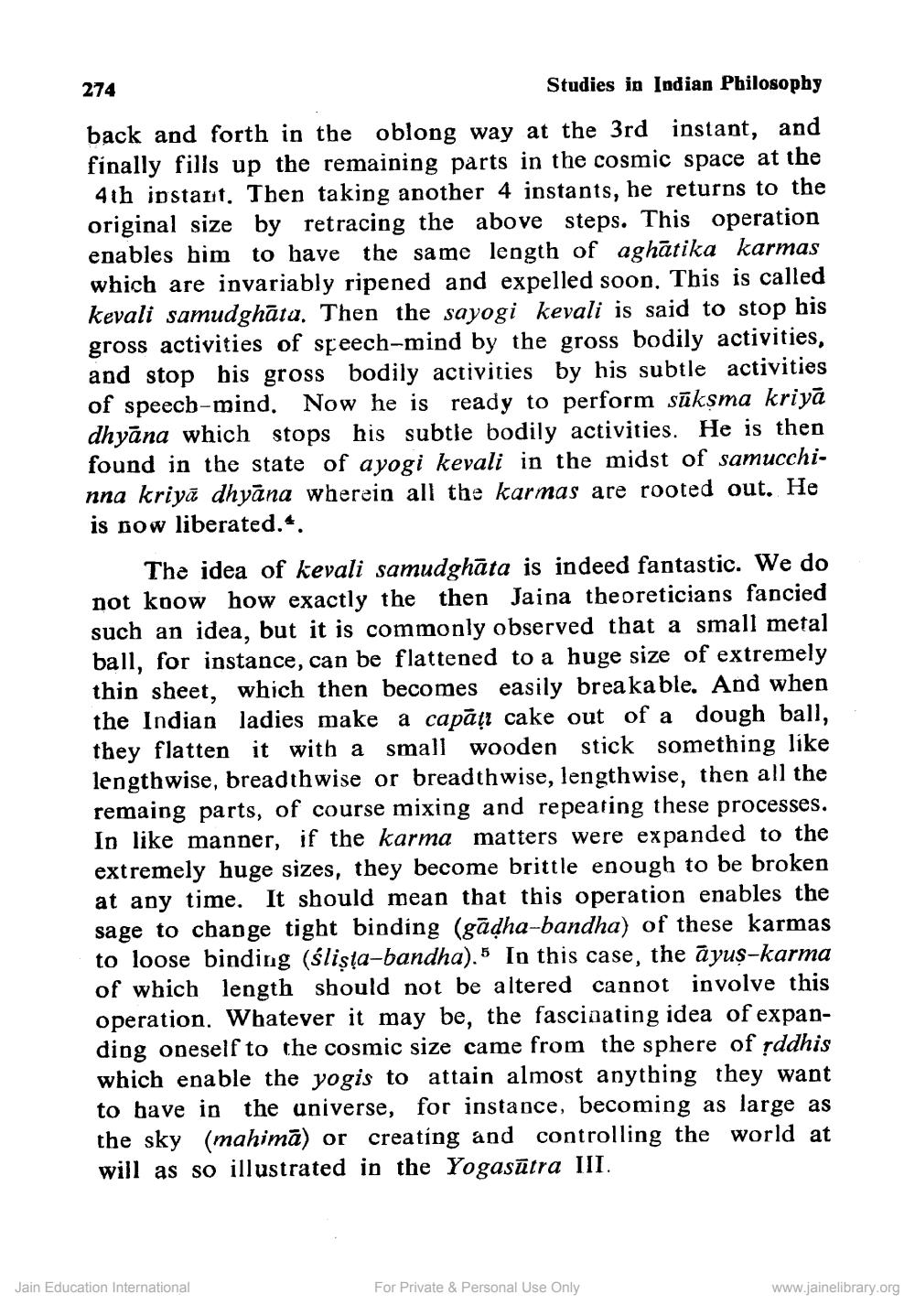________________
Studies in Indian Philosophy
back and forth in the oblong way at the 3rd instant, and finally fills up the remaining parts in the cosmic space at the 4th instant. Then taking another 4 instants, he returns to the original size by retracing the above steps. This operation enables him to have the same length of aghatika karmas which are invariably ripened and expelled soon. This is called kevali samudghata. Then the sayogi kevali is said to stop his gross activities of speech-mind by the gross bodily activities, and stop his gross bodily activities by his subtle activities of speech-mind. Now he is ready to perform sūkṣma kriya dhyana which stops his subtle bodily activities. He is then found in the state of ayogi kevali in the midst of samucchinna kriya dhyana wherein all the karmas are rooted out. He is now liberated.*.
274
The idea of kevali samudghata is indeed fantastic. We do not know how exactly the then Jaina theoreticians fancied such an idea, but it is commonly observed that a small metal ball, for instance, can be flattened to a huge size of extremely thin sheet, which then becomes easily breakable. And when the Indian ladies make a capat cake out of a dough ball, they flatten it with a small wooden stick something like lengthwise, breadthwise or breadthwise, lengthwise, then all the remaing parts, of course mixing and repeating these processes. In like manner, if the karma matters were expanded to the extremely huge sizes, they become brittle enough to be broken at any time. It should mean that this operation enables the sage to change tight binding (gadha-bandha) of these karmas to loose binding (śliṣṭa-bandha).5 In this case, the ayus-karma of which length should not be altered cannot involve this operation. Whatever it may be, the fascinating idea of expanding oneself to the cosmic size came from the sphere of ṛddhis which enable the yogis to attain almost anything they want to have in the universe, for instance, becoming as large as the sky (mahima) or creating and controlling the world at will as so illustrated in the Yogasutra III.
Jain Education International
For Private & Personal Use Only
www.jainelibrary.org




